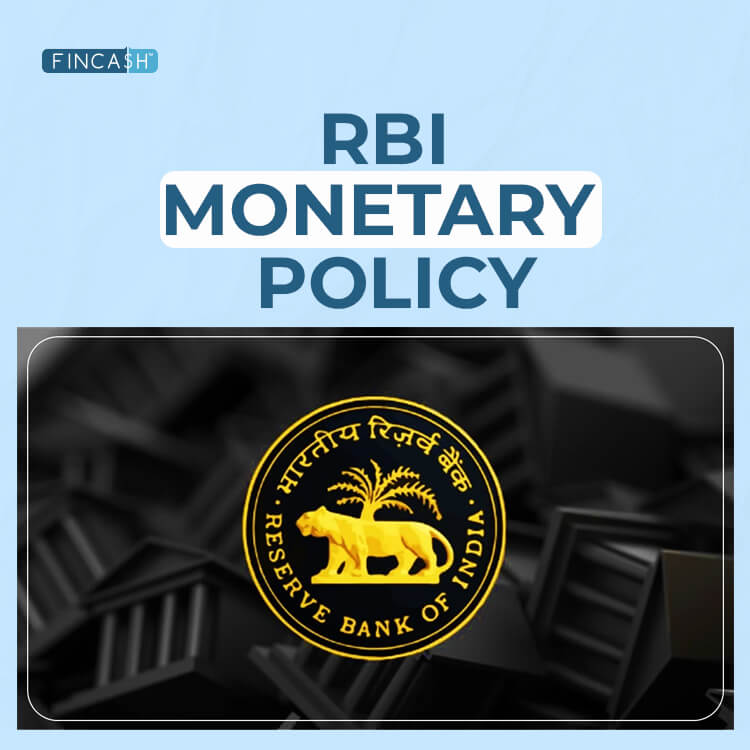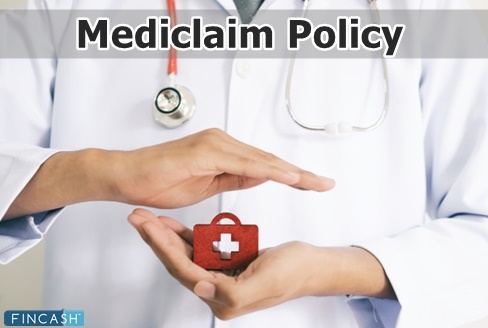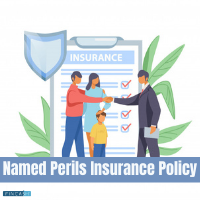
Table of Contents
- Key Highlights of the Monetary Policy Committee
- Unchanged Fixed Repo Rate
- Bolstering Economic Activity in 2024-25
- The Scenario of CPI Inflation
- 7% GDP Growth Target for the Next Financial Year
- Introduction of Programmability and Offline Functionality in CBDC Pilot
- Framework Based on Principles for Authenticating Digital Payment Transactions
- Strengthening the Security of AePS
- Key Fact Statement Mandate for Retail and MSME Loans
- Gold Price Risk Hedging in IFSC's OTC Market
- Global Growth and Financial Markets
- Conclusion
The RBI Monetary Policy 2024 - 25
The recent RBI Monetary Policy Committee (MPC) meeting of the Reserve Bank of India (RBI) was summoned amidst several notable developments, including a moderation in headline Inflation, steady core inflation, and a budget characterised by fiscal forethought and non-inflationary measures.

Globally, growth indicators continue to exhibit resilience despite prevailing expectations of a slowdown. The US Federal Reserve's decision to remove its tightening bias raises speculation regarding the commencement of a rate cut cycle. Furthermore, geopolitical strains in the Middle East and Red Sea region pose significant risks to the promising global recovery. Against this backdrop, the Indian MPC maintained the status quo on both rates and its stance, emphasising the incomplete transmission of previous rate hikes and the lingering distance from the 4% CPI target.
In this post, let's navigate the RBI's monetary policy and everything that was announced.
Key Highlights of the Monetary Policy Committee
Here are some of the key highlights as announced:
The RBI has chosen to keep the repo rate unchanged at 6.5%, with a majority of five out of six members supporting this decision.
By a majority vote of 5 out of 6 members, the MPC also endorsed the strategy of withdrawing accommodation to ensure a gradual convergence of inflation towards the target while fostering Economic Growth.
Governor Shaktikanta Das emphasised the necessity for the monetary policy to pursue disinflation actively.
The RBI has reserved its inflation forecast at 5.4% for 2023–2024.
Projections indicate that Consumer Price Index (CPI) inflation is expected to reach 4.5% for the upcoming Fiscal Year 2024–2025. The breakdown includes Q1 at 5%, Q2 at 4%, Q3 at 4.6%, and Q4 at 4.7%.
Unchanged Fixed Repo Rate
In his statement, RBI Governor Shaktikanta Das emphasised the importance of maintaining an actively disinflationary monetary policy. Governor Das noted that the MPC remained steadfast in its objective to contain inflation within the target Range of 4%. This decision marks the sixth consecutive unchanged stance and follows the announcement of the Interim Budget on February 1, 2024.
The MPC, following a thorough evaluation of the prevailing and evolving macroeconomic conditions, reached the following resolutions:
- Under the liquidity Adjustment Facility (LAF), the policy repo rate will be 6.50%.
- Consequently, the standing deposit facility (SDF) rate remains unchanged at 6.25%, while the Marginal Standing Facility (MSF) rate and the Bank Rate are retained at 6.75%.
- Additionally, the MPC reaffirmed its commitment to the gradual withdrawal of accommodation to ensure that inflation steadily converges towards the target while fostering economic growth.
- These decisions align with attaining the medium-term target for Consumer Price Index (CPI) inflation of 4% within a band of +/- 2% while bolstering growth prospects.
- Domestic Economic Activity
- Domestic economic activity is on an upward trajectory. The National Statistical Office (NSO) released the First Advance Estimates, which said that the real Gross Domestic Product (GDP) is expected to rise by 7.3% Year-on-Year (y-o-y) in 2023-24, sustained by robust investment activity. The Manufacturing and services sectors are pivotal drivers behind the expansion, with Gross Value Added (GVA) registering a 6.9% increase in 2023-24.
Talk to our investment specialist
Bolstering Economic Activity in 2024-25
The recovery in rabi sowing sustained manufacturing profitability and the services sector's inherent resilience are anticipated to bolster economic activity in 2024-25. Household consumption is expected to strengthen, while the outlook for fixed investment remains optimistic due to an upturn in private Capital expenditure, improved business sentiments, sound balance sheets of banks and corporations, and the government's continued emphasis on Capital Expenditure. Furthermore, an improving global trade outlook and increased integration into global supply chains are controlled to support net external demand. However, risks to the outlook persist, stemming from geopolitical tensions, Volatility in international financial markets, and geoeconomic fragmentation.
Considering these factors, real GDP growth for 2024-25 is projected at 7.0%, with growth rates for each quarter estimated as follows:
- Q1 at 7.2%
- Q2 at 6.8%
- Q3 at 7.0%
- Q4 at 6.9%
The risks to this outlook are evenly balanced.
The Scenario of CPI Inflation
Following its low point of 4.9% in October 2023, CPI inflation progressively rose over the next two months, reaching 5.7% by December. The increase in Headline Inflation was primarily driven by food inflation, particularly year-on-year increases in vegetable prices, while deflation in fuel intensified. In the meantime, core inflation, which eliminates food and fuel, decreased to a four-year low of 3.8% in December.
Looking ahead, the inflation trajectory will be influenced by the evolving outlook for food inflation. Rabi sowing has exceeded last year's levels, and while the usual seasonal correction in vegetable prices persists, it remains uneven. However, significant uncertainty surrounds the food price outlook due to the potential impact of adverse weather events. Effective supply-side responses may help alleviate food price pressures. Core inflation remains subdued due to the continued pass-through of monetary policy actions and stances. Despite this, crude oil prices remain volatile. According to surveys conducted by the RBI, manufacturing firms anticipate a slight easing in input costs and selling prices in Q4 2023-24, while services and infrastructure firms expect increased input cost pressures and growth in selling prices.
Considering these factors, CPI inflation is forecasted at 5.4% for 2023-24, with Q4 projected at 5.0%. Assuming a normal monsoon in the coming year, CPI inflation for 2024-25 is estimated at 4.5%, with:
- Q1 at 5.0%
- Q2 at 4.0%
- Q3 at 4.6%
- Q4 at 4.7%
The risks associated with this projection are evenly balanced.
7% GDP Growth Target for the Next Financial Year
In the previous policy review, the RBI increased its GDP growth forecast for 2023-24 by 50 Basis Points to 7%, reflecting the substantial upside surprise in the July-September data. RBI Governor Shaktikanta Das recently stated that India's Economy is predicted to thrive by 7% in the upcoming financial year 2024-25.
Introduction of Programmability and Offline Functionality in CBDC Pilot
The ongoing CBDC Retail (CBDC-R) pilot facilitates Person to Merchant (P2M) and Person to Person (P2P) transactions using Digital Rupee wallets offered by pilot banks. The proposal now includes expanding the scope with programmability and offline functionality. Programmability allows various users, such as government agencies, to ensure payments are designated for specific benefits. Similarly, corporations can program predefined expenses like employee business travel.
Additional features, such as validity periods or geographical restrictions on CBDC usage, can also be programmed. Additionally, an offline functionality is proposed for CBDC-R to facilitate transactions in areas with poor or limited internet connectivity. For this purpose, various offline solutions will be tested across hilly, rural, and urban locations, including proximity and non-proximity-based methods. These enhancements will be introduced gradually through the ongoing pilots.
Framework Based on Principles for Authenticating Digital Payment Transactions
To accommodate the adoption of alternative authentication methods for digital security purposes, there's a proposal to implement a principle-based "Framework for authentication of digital payment transactions."
Strengthening the Security of AePS
To bolster the security of Aadhaar Enabled Payment System (AeP) transactions, there's a proposal to streamline the onboarding process for AePS touchpoint operators, with banks required to conduct mandatory due diligence. Additionally, further measures for fraud risk management will be explored.
Key Fact Statement Mandate for Retail and MSME Loans
The RBI has implemented measures to ensure Regulated Entities (REs) provide clear information on loan pricing and associated charges to enhance transparency and customer awareness. One such measure is the introduction of the Key Fact Statement (KFS), which summarises essential details of a loan agreement, including the total cost, in a simple and easily understandable format. Initially required for loans from scheduled commercial banks to individuals, digital lending, and microfinance, the mandate now extends to all REs Offering retail and MSME loans.
Gold Price Risk Hedging in IFSC's OTC Market
To enhance risk management capabilities, resident entities were initially granted access to recognised exchanges in the International Financial Services Centre (IFSC) for hedging gold price risk in December 2022. Now, they will also be permitted to hedge gold prices in the Over-The-Counter (OTC) segment within the IFSC.
Global Growth and Financial Markets
Global economic growth is expected to stabilise in 2024 following a resilient performance amidst a turbulent previous year. Inflationary pressures, although gradually receding from multi-decade highs, still experience sporadic upticks. Financial Market sentiments have been volatile, driven by shifting perceptions regarding the potential timing of policy adjustments by central banks in Advanced Economies (AEs). The anticipation of lower interest rates has fuelled rallies in equity markets. Yet, uncertainty regarding the timing of rate cuts is evident through fluctuating movements in the US dollar and sovereign bond yields. Emerging Market Economies (EMEs) are wrestling with currency fluctuations amidst unpredictable capital flows.
Conclusion
Lastly, the MPC meeting minutes are set to be published on February 22, 2024. Subsequently, the next MPC meeting is slated for April 3 to 5, 2024. The RBI's monetary policy announcement reflects a sensible approach to balancing economic growth dynamics and inflationary pressures. With the decision to maintain the policy repo rate unchanged at 6.50% and to focus on the withdrawal of accommodation, the RBI underscores its commitment to managing inflation while supporting economic expansion. As global uncertainties persist and geopolitical tensions loom, the RBI remains vigilant, emphasising the importance of continued vigilance and proactive measures to sustain macroeconomic stability.
All efforts have been made to ensure the information provided here is accurate. However, no guarantees are made regarding correctness of data. Please verify with scheme information document before making any investment.












